“I dislike waste. I dislike inefficiency. Avoidance. Impatience. I dislike people who think they can do more than they can do. I dislike not paying attention to details, being mean just to be mean. I dislike aprons and housedresses. I used to dislike the color purple,” Martha Stewart says in the opening moments of “Martha,” Netflix’s latest celebrity documentary.
Directed by R.J. Cutler, the nearly two-hour showcase spotlights the queen of domesticity (also hailed as America’s original influencer) and chronicles Stewart’s illustrious career. It begins with Stewart’s upbringing in a working-class family, later delving into her less-than-picture-perfect marriage, her success as a businesswoman and her bombshell involvement in the ImClone stock trading scandal.
“People don’t quite understand just how much of a visionary Martha was and continues to be. She understood synergy long before others did; she understood the lack of barriers between different kinds of content before others did; she understood the power of the personal brand before others did,” Cutler told Netflix. “She made the world a more beautiful place, and she gave us greater access to beauty. She democratized fashion, taste, and style. She saw the future before others saw it and she always had to overcome enormous obstacles that were in her way.”
Indeed, Stewart overcame many obstacles to become the first self-made female billionaire in the U.S. As the documentary shows, her journey was certainly not an easy one. Nor was it forgiving. The most intimate moments from Stewart’s personal and professional lives are displayed through intimate interviews with Stewart herself along with private archives of her diaries and letters.
Here are the biggest bombshells from the documentary:
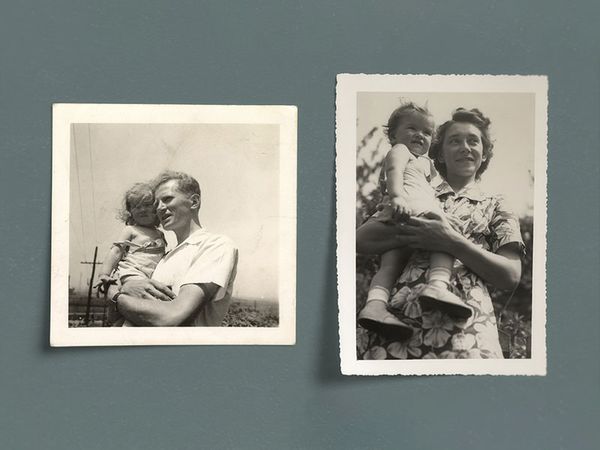 Martha (Courtesy of Netflix)
Martha (Courtesy of Netflix)“I am a perfectionist. And it runs in the family. And it started with my father,” Stewart said in the opening of her documentary.
Stewart’s father, Edward Kostyra, worked as a salesman and struggled to support his family of eight. To make sure his children had food on their plates, Kostyra grew gardens and instructed his children to take care of them. Stewart recalled her father watching over her and her siblings like “a sergeant.”
“We had our whippings. It was the yardstick,” said Stewart’s brother, Frank Kostyra. “We dreaded the yardstick. And at times, it was the end of the belt.”
“To this day I despise gardening,” said Stewart’s brother, Eric Scott.
Stewart’s relationship with her father was different. According to her, she was “the ideal daughter” because she wanted to learn and was willing to listen to her father.
“He loved me. And it was very obvious to everybody that I was his favorite,” Stewart said. “He thought I was more like him than the other children.”
Stewart and her father had a bitter fight years later when Stewart asked to marry her then-boyfriend Andrew “Andy” Stewart.
“But I went home and told my dad, and my dad slapped me,” she recalled. “And he slapped me hard on…on my face and said, ‘No. You’re not marrying him. He’s a Jew.’”
“I remember getting that slap,” Stewart continued. “I was not at all surprised because he was a bigot. And he was impulsive. But I said, ‘I’m gonna get married no matter what you think.’”
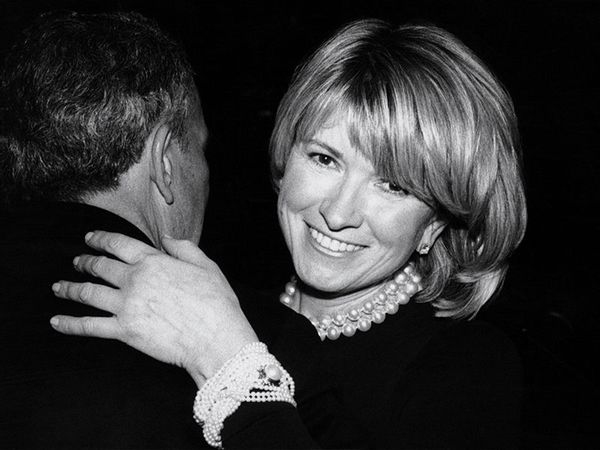 Martha Stewart in "Martha" (Courtesy of Netflix)
Martha Stewart in "Martha" (Courtesy of Netflix)During her five-month-long honeymoon in Europe, Stewart traveled across Italy and visited Florence the night before Easter. “I had to go to church, and I went to the cathedral,” she said.
Stewart's husband wasn’t interested in visiting the Duomo with her and stayed back in their hotel.
“Listening to that amazing music in that cathedral…it was a very romantic place, crowded with tourists,” she recalled. At that moment, Stewart met a “very handsome guy.”
She continued, “He didn’t know I was married. I was this waif of a girl hanging out in the cathedral on Easter Eve. He was emotional. I was emotional. It’s just because it was such an emotional place. It was unlike anything I had ever experienced. An expansive dome so beautiful and paintings all around you.”
“It was like nothing I had ever done before. And so why not kiss a stranger?”
Stewart said the act was “neither naughty nor unfaithful.” Instead, “it was just emotional, of the moment.”
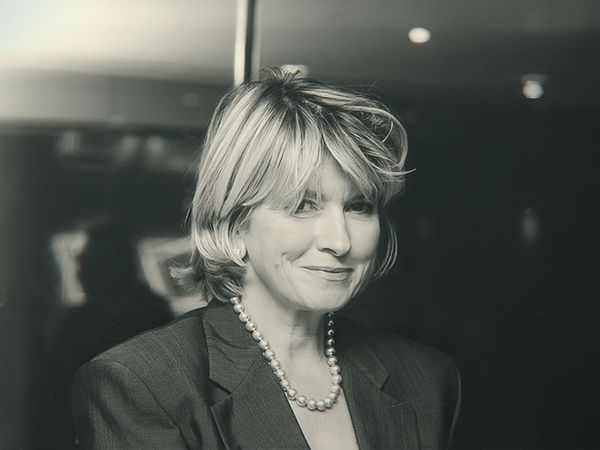 Martha Stewart in "Martha" (Courtesy of Netflix)
Martha Stewart in "Martha" (Courtesy of Netflix)On the outside, Stewart and her husband had the perfect life and perfect marriage. Stewart had a successful catering business and Andy ran a successful publishing company. But things weren’t as fabulous as they seemed.
Stewart said Andy was cheating on her and had multiple girlfriends (although, she’s not sure of the specific number).
“Young women, listen to my advice. If you’re married, and you think you’re happily married, and your husband starts to cheat on you ... get out of it," Stewart said.
“Didn't you have an affair early on in the relationship?” a producer behind the camera then asked Stewart.
Stewart said she did when she worked as a stockbroker on Wall Street in the 1960s, but Andy never knew of her infidelity.
“He did say he knew about it,” the producer clarified. “You had confessed it. He says he didn’t stray from the marriage until you told him you had already strayed.”
“Oh, that’s not true. I don’t think,” Stewart responded.
She said she had a “very brief affair with a very attractive Irish man.” The affair meant nothing to Stewart.
“I would never have broken up a marriage for it. It was nothing…It was like the kiss in the cathedral.”
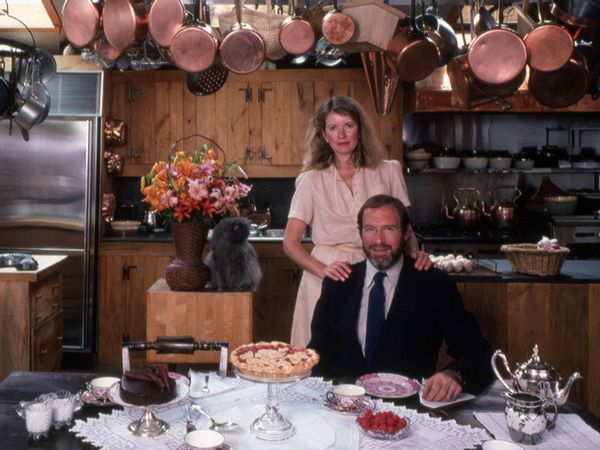 Martha Stewart and Andrew "Andy" Stewart in "Martha" (Courtesy of Netflix)
Martha Stewart and Andrew "Andy" Stewart in "Martha" (Courtesy of Netflix)Stewart recalled one of the most heartbreaking moments in her marriage. Andy was having an affair with Robyn Fairclough, a flower designer who was working for Stewart and lived in the barn house on her Connecticut property. Stewart had offered Fairclough a place to stay after she had lost her apartment.
“It was like I put out a snack for Andy,” Stewart said. “Andy betrayed me right on our property. Not nice.”
The affair took such an emotional and physical toll on Stewart that she would pull her hair out. In a series of letters to Andy, Stewart wrote, “I am agonizingly jealous of your other women.” “I’m so miserable, I cannot believe myself,” she wrote in another. “I should be vital, beautiful, sexual, and desirable … I’m worried and lonely, alone, hopeless.”
“I have to go to San Francisco and talk about weddings and my wonderful life,” she wrote. “I hope you are enjoying your freedom. And I hope my plane crashes.”
Stewart and Andy separated in 1987 and divorced in 1990. She said the decision to split was Andy’s.
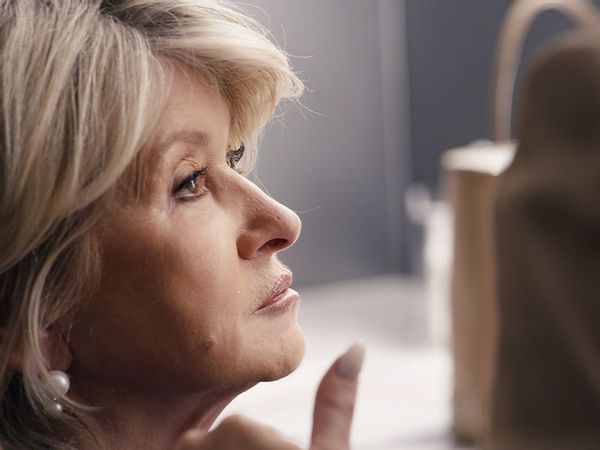 Martha Stewart in "Martha" (Courtesy of Netflix)
Martha Stewart in "Martha" (Courtesy of Netflix)In Dec. 2001, Stewart had sold her stake in ImClone Systems, a now-defunct biopharmaceutical company, after receiving word from her broker, Peter Bacanovic, that ImClone CEO Sam Waksal and his daughter Aliza Waksal had placed orders to sell all their ImClone stock. Because the Waksals’ decision to sell was not public information, Bacanovic and Stewart were accused of acting on insider information and lying to federal prosecutors.
In March 2004, Stewart was found guilty of conspiracy, obstruction and two counts of lying to federal investigators. She was sentenced in July 2004 to five months in prison, along with five months of home confinement and two years of supervised probation.
“It was so horrifying to me that I had to go through that to be a trophy for these idiots in the U.S. attorney's office,” Stewart said in the documentary. “Those prosecutors should’ve been put in a Cuisinart and turned on high.”
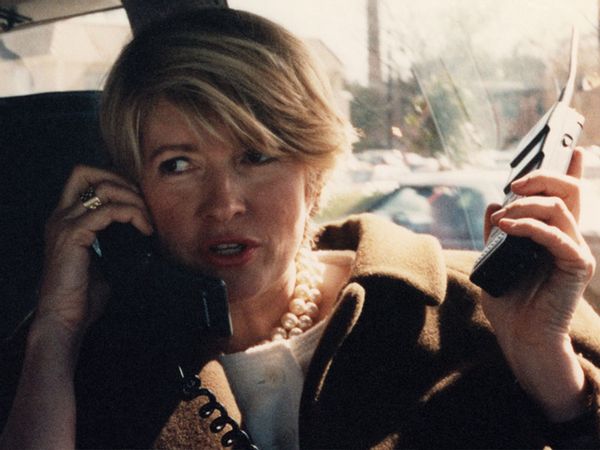 Martha Stewart in "Martha" (Courtesy of Netflix)
Martha Stewart in "Martha" (Courtesy of Netflix)Stewart was sent to Alderson Federal Prison Camp, a minimum-security women's prison in West Virginia. In one of her many journal entries, Stewart recalled the time she was punished for touching a prison guard.
“Today, I saw two very well-dressed ladies walking, and I breezed by them, remarking on the beautiful warm morning and how nice they looked,” she wrote. “When I realized, from the big silver keychain, that they were guards, I lightly brushed the chain.”
“Later, I was called in to be told never, ever to touch a guard without expecting severe reprimand. Of course, I apologized, but the incident was so minor when it occurred that I did not think about it for the rest of the day.”
Stewart said she was dragged into solitary confinement for touching an officer. She received no food or water for a day.
The prison itself had been nicknamed Camp Cupcake by several tabloids. “It was not a cupcake,” Stewart said.
 Martha Stewart in "Martha" (Courtesy of Netflix)
Martha Stewart in "Martha" (Courtesy of Netflix)“I don’t think he liked hanging out with somebody in jail,” Stewart said when asked why Charles Simonyi, a Hungarian software developer who she dated from 1993 to 2008, visited her only once while she was in prison.
“He was out on his boat, floating around the world. That was distressing to me.”
Three years after Stewart was released from prison, she and Simonyi went on an elaborate trip to visit the president of Iceland. Simonyi eventually told Stewart that he was getting married to Lisa Persdotter, a Swedish millionaire heiress 32 years his junior. Stewart said she was dumped by her longtime partner while the two were in bed.
“He said, ‘You know, Martha, I’m gonna get married to Lisa.’ I said, ‘Lisa who?’ He hadn’t told me a word,” Stewart said. Simonyi also told her, “And, by the way, her parents don’t want me to ever speak to you again.”
“How can a man who spent 15 years with me just do that? What a stupid thing to do to someone that you actually care about.”
 Martha Stewart in "Martha" (Courtesy of Netflix)
Martha Stewart in "Martha" (Courtesy of Netflix)Stewart opened up about her squabble with Mark Burnett, the executive producer behind “The Martha Stewart Show.” Burnett, who created “The Apprentice” with Donald Trump the year before, had a different outlook on what Stewart’s daytime show would look like.
“Mark Burnett wanted a talk show with variety guests, and I really wanted my old format of ‘how-to,’” Stewart said. Unfortunately, Stewart didn’t have much say about her own show considering that she was fresh out of prison and struggling financially. Stewart had to cancel her previous how-to format television show, “Martha Stewart Living.” She was also forced to resign from her position as head of her company, Martha Stewart Living Omnimedia.
“She was in a really vulnerable moment right then,” L.A. Times reporter Meg James, who covered Stewart during the early aughts, said in the documentary. “Had Martha not gone to prison, she wouldn't have done the deal with Mark Burnett. She lost control, and the result wasn't what she or the audience came to expect. It just felt forced.”
“The Martha Stewart Show” ran on air for eight years, from 2005 to 2012. Stewart, however, said she was disappointed with the show. Burnett, she claimed, “missed the point of Martha Stewart. A live audience, crummy music, that was more like prison than being at Alderson.”
“I was much more agile prior to prison, and my life became a little less exciting,” she said.
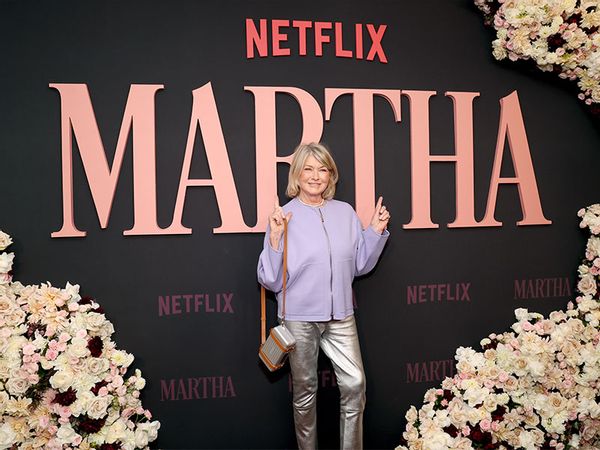 Martha Stewart attends the New York premiere of The Netflix Documentary: Martha on October 21, 2024 in New York City. (Kevin Mazur/Kevin Mazur/Getty Images for Netflix)
Martha Stewart attends the New York premiere of The Netflix Documentary: Martha on October 21, 2024 in New York City. (Kevin Mazur/Kevin Mazur/Getty Images for Netflix)After losing over one billion dollars from selling her company “Martha Stewart Living,” Stewart said her “mojo was damaged.” However she bounced back in 2015 — and gained a new friend.
Stewart solidified her friendship with rapper Snoop Dogg during Comedy Central’s roast of Justin Bieber. The iconic duo would later appear on the “$100,000 Pyramid” as a celebrity team; host their own show, “Martha and Snoop’s Potluck Dinner Party,”; publish a cookbook together and co-host the Puppy Bowl.
"Martha" is currently streaming on Netflix. Watch a trailer below, via YouTube:
Read more
about Martha Stewart:


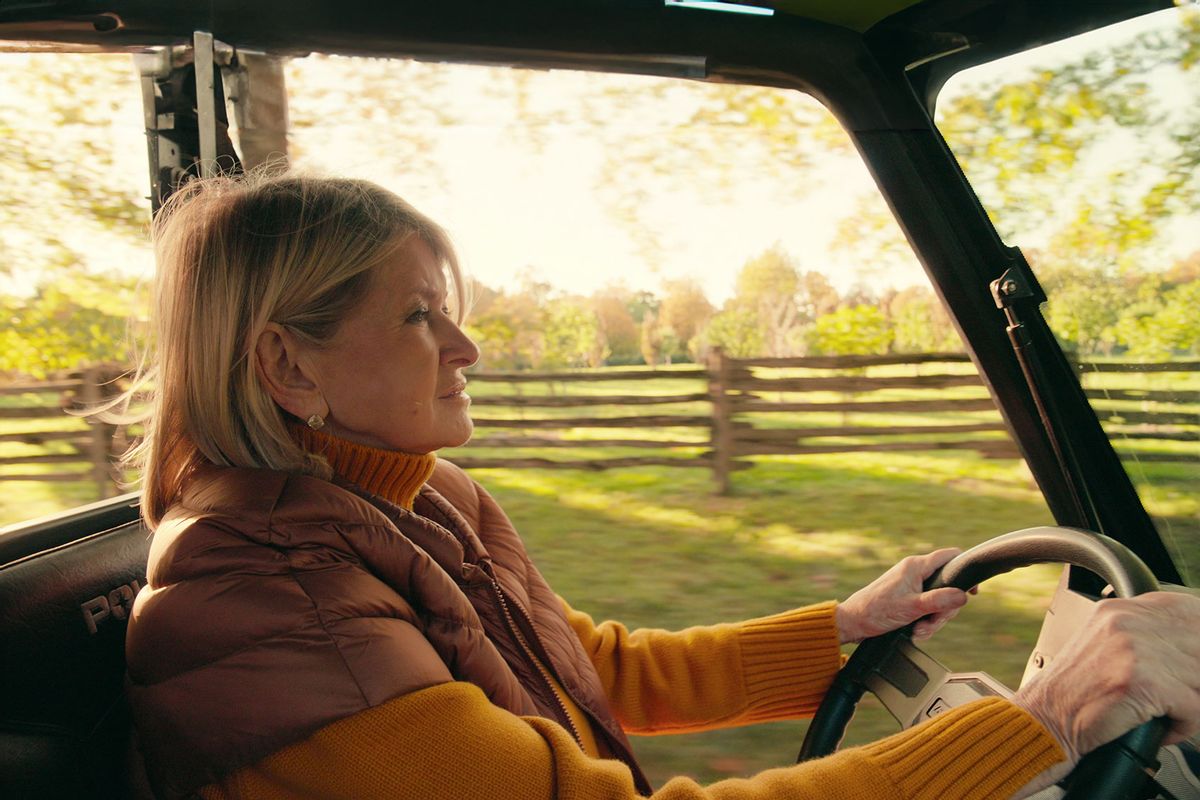
Shares